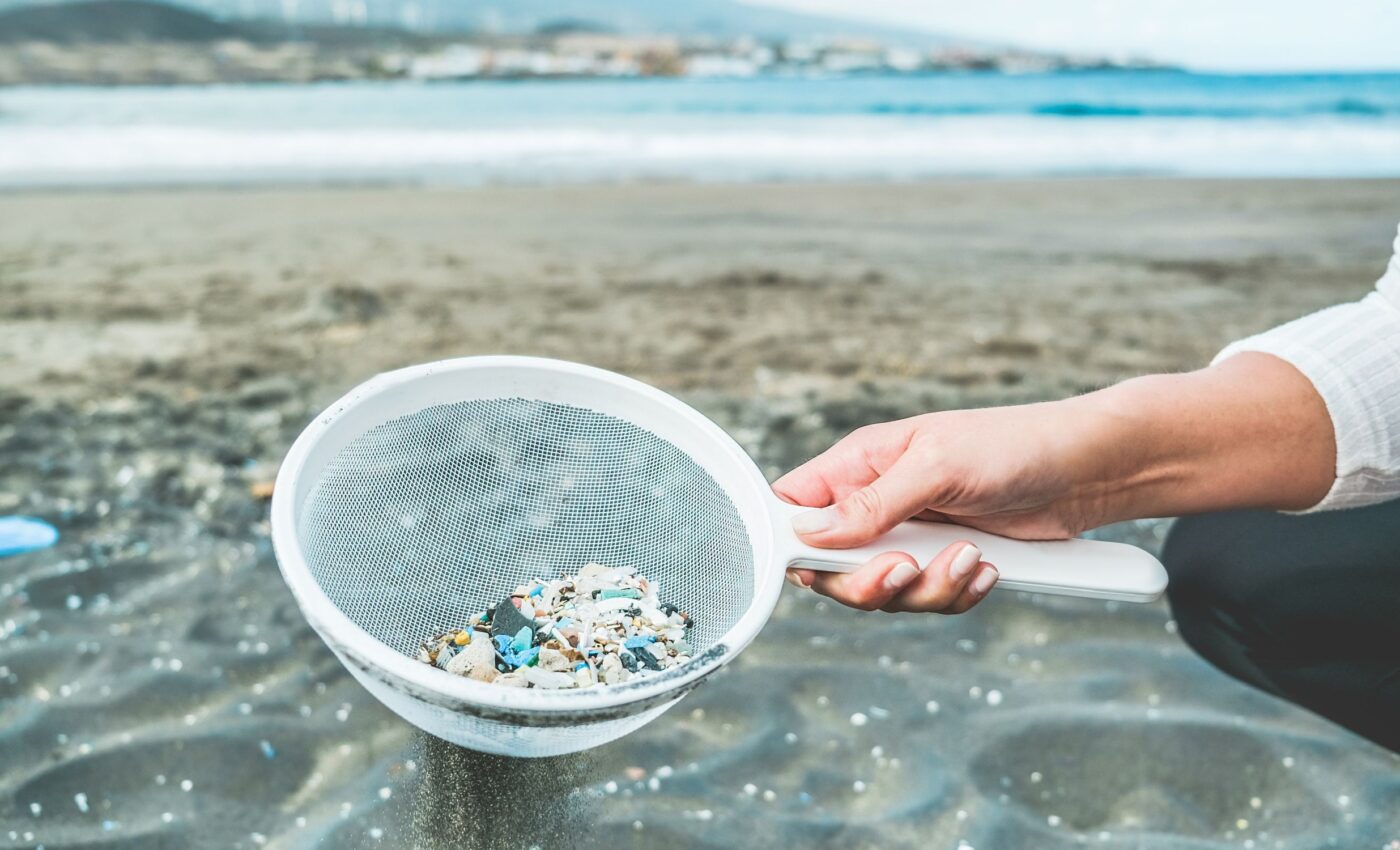
Microplastics often go undetected in oceans due to their tiny size
Chemicals within microplastics in our oceans, waterways, and drinking water sources remain a pressing concern for scientists and public health officials.
Recent research has uncovered that the smallest particles of microplastics (MPs) in ocean waters, spanning from the Caribbean to the Arctic, are not being detected by traditional net tow surveys.
The study, conducted by scientists from the School of Marine and Atmospheric Sciences (SoMAS) at Stony Brook University, was led by Dr. Luis Medina Faull.
How do microplastics get into the ocean?
Microplastics enter the ocean through various pathways. One primary source is the breakdown of larger plastic debris due to sunlight, waves, and other environmental factors. Plastic items like bottles and bags fragment into smaller pieces over time.
Additionally, microplastics come from industrial processes, where tiny plastic pellets or “nurdles” are used as raw materials and often spill into waterways. Microfibers from synthetic clothing also contribute significantly; they are shed during washing and then pass through wastewater treatment plants, which cannot capture all these tiny fibers.
Runoff from urban areas and storm drains carries microplastics from streets and landfills directly into rivers and oceans. Furthermore, microbeads, found in personal care products like exfoliating scrubs and toothpaste, wash down household drains and end up in the ocean.
The combination of these sources leads to a widespread distribution of microplastics throughout marine environments.
Hidden dangers of ocean microplastics
Microplastics proliferate in aquatic systems, posing significant biological threats to marine and terrestrial life. Additionally, these tiny particles can enter the food web, eventually reaching humans through seafood consumption.
The researchers utilized Raman microspectroscopy, a sophisticated laboratory technique combining vibrational spectroscopy with a microscope, to detect and chemically identify minute particles in environmental samples.
These samples were collected from three distinct global ocean regions: the northeastern coast of Venezuela, the Gulf Stream Current encompassing Caribbean waters, and the Pacific Arctic Ocean.
Identifying the smallest ocean microplastics
Standard net tow surveys detect microplastics using tightly meshed plankton nets, which sieve out particles during the tow. However, Raman microspectroscopy allows researchers to identify much smaller particles.
The study revealed that the most abundant MPs in seawater ranged between 1 and 14 micrometers, with 60 percent under 5 micrometers and none larger than 53 micrometers.
“Our results highlight the numerical primacy of small MP particles in seawater. This size fraction has been totally overlooked in almost all marine MP surveys,” said Dr. Medina Faull.
Importance of mass-based inventories
The detection method used in the study enabled the researchers to determine the identities and sizes of MP particles, from which masses were calculated.
Mass-based inventories provide more accurate and meaningful estimations of global oceanic plastic inventories. Dr. Faull explained that this leads to vital information for calculating the mass flux of MPs through aquatic ecosystems.
Implications for human health
The researchers found that the smallest MPs contained chemicals potentially harmful to both marine life and human health if consumed through the food web.
The most abundant polymers detected were polypropylene, polystyrene, and polyethylene – consistent with the composition of global plastic waste in oceans.
Dr. Jaymie Meliker, a professor at Stony Brook University who was not involved in the study, emphasized the need for more public health research on microplastic exposure.
“Understanding health risks from exposure to microplastics is a vastly understudied area. Investigations are needed to understand the health impacts from microplastics of different shapes, sizes, and compositions,” he stated.
Challenges in addressing microplastics in oceans
Dr. Faull highlighted the challenges in addressing and capturing the proliferation of MPs in the world’s oceans.
“Firstly, most of the ocean is grossly under-sampled, and the majority of existing data is based on towed net studies. Smaller, less buoyant MP particles residing below the ocean’s upper few meters are almost never sampled,” said Dr. Faull.
“Secondly, understanding sources of MPs transport and final landing locations, such as ocean floors, is crucial to explain the distribution patterns of MPs throughout the ocean.”
The study highlights the urgent need for more comprehensive sampling and research methods to fully understand and mitigate the impact of microplastics in our oceans.
The study is published in the journal Marine Pollution Bulletin.
—–
Like what you read? Subscribe to our newsletter for engaging articles, exclusive content, and the latest updates.
Check us out on EarthSnap, a free app brought to you by Eric Ralls and Earth.com.
—–













